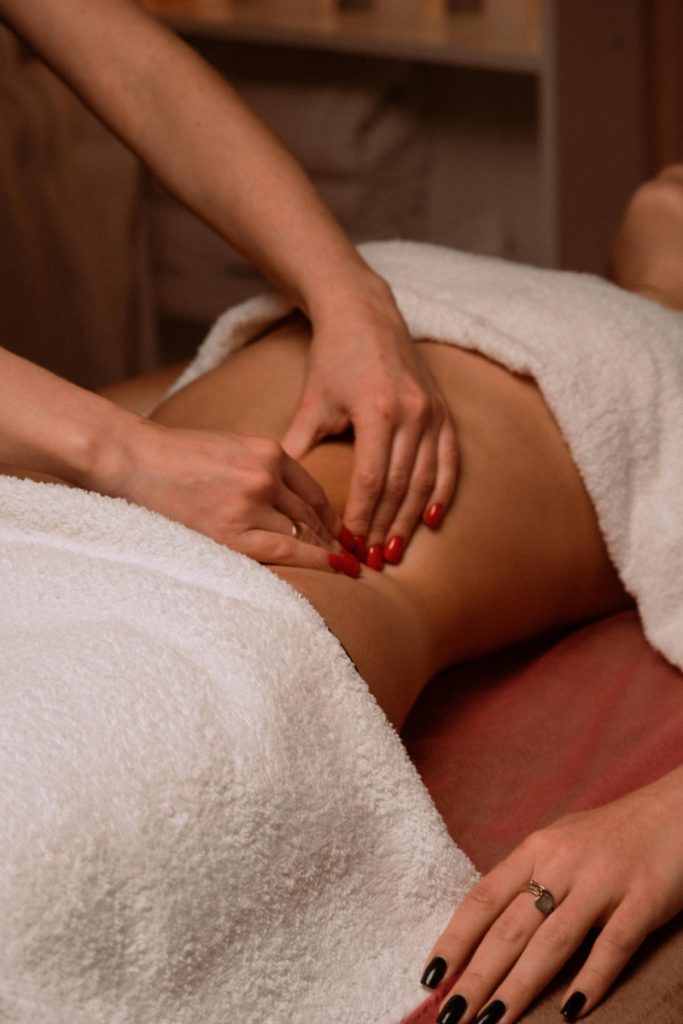Acupuncture for pudendal nerve entrapment is a gentle and effective option for people with pelvic pain that gets worse when sitting. This condition can cause sharp, burning, or tingling pain in the perineum, rectum, or genitals. It may also lead to pain during intercourse, bathroom issues, or a feeling that something is stuck inside.
Many people turn to acupuncture when other treatments don’t help or when they want a natural way to feel better. It can ease muscle tension, reduce nerve pain, and support healing.
Want to know if acupuncture can help your pelvic pain? Book a free consultation with our Edmonton clinic, and reach out with your questions.
What Is Pudendal Nerve Entrapment?
The pudendal nerve is an important nerve that starts in the lower back and travels through the pelvis. It gives feeling to the pelvic floor, genitals, and the area between the anus and genitals. It also helps with muscle control in this region.
Pudendal nerve entrapment (PNE) happens when this nerve gets squeezed or irritated. This can happen for many reasons, including:
Childbirth or pelvic surgery
Sitting for long periods
Cycling often
Injuries to the pelvis
Muscle tightness
Scar tissue or inflammation
Because this condition shares symptoms with others, like pelvic floor dysfunction or interstitial cystitis, many people are misdiagnosed. They may live with pain for years without knowing the cause.

Common Symptoms of Pudendal Nerve Entrapment
PNE can cause different symptoms depending on which part of the nerve is affected. Here are some common signs:
Burning or stabbing pain in the vagina, penis, scrotum, or rectum
Tingling or numbness in the pelvic area
Pain that gets worse when sitting and feels better when standing or lying down
Feeling like there’s something stuck in the vagina or rectum
Pain with intercourse or bowel movements
Frequent need to pee or trouble fully emptying the bladder
These symptoms can be frustrating and challenging to live with. But the good news is that acupuncture for pudendal nerve entrapment can help reduce them.
Want to learn more about how acupuncture supports pelvic health? Read our blog on pelvic floor acupuncture.
How Acupuncture Helps Pudendal Nerve Entrapment
Acupuncture is a safe, drug-free way to treat pelvic pain. It works by calming the nervous system, relaxing tight muscles, and improving blood flow. Here’s how it helps:
1. Reduces Nerve Inflammation and Pain
When the pudendal nerve is irritated, it can become inflamed. This sends strong pain signals to the brain. Acupuncture helps reduce this inflammation. It tells the body to release natural pain-relieving chemicals, such as endorphins and serotonin. These chemicals calm the nerves and make pain feel less intense.
Studies show that acupuncture can lower levels of inflammatory markers in the body. This helps reduce irritation in the nerve and surrounding tissues.
Want to learn more about how acupuncture helps with pain? Read the full study here.
2. Relieves Tight Pelvic Muscles
In many people with Pudendal nerve entrapment (PNE), the muscles in the pelvic floor are too tight. This includes muscles such as the piriformis and the obturator internus. These tight muscles can compress the pudendal nerve, worsening pain.
Acupuncture helps relax muscles. It also improves blood flow to the area needles are inserted, which allows the muscles to work better. When the muscles relax, they stop pressing on the nerve, and symptoms improve.
3. Improves Blood Flow and Healing
Acupuncture helps increase blood flow to the pelvis, bringing more oxygen and nutrients to the pudendal nerve. This supports natural healing and can help ease pain over time.
Lack of blood flow (also called ischemia) is a common problem in people with nerve pain. Acupuncture helps fix this by opening up small blood vessels in the area.
While there aren’t many studies yet on acupuncture specifically for Pudendal Neuralgia (PNE), research on similar conditions shows promising results. For example, one study found that needling near the pudendal artery increased blood flow and improved bladder function. Other studies show acupuncture boosts circulation in the skin and helps heal slow-healing wounds (like leg ulcers!).
These findings suggest that acupuncture may help people with PNE by improving pelvic blood flow and supporting nerve recovery.
4. Supports Overall Recovery
In Traditional Chinese Medicine, pelvic nerve pain is often associated with poor circulation and stress. Calming the nervous system and improving blood flow can help the whole body work better.
Acupuncture treatments support the body as a whole. This includes treating the nerves, relaxing tight muscles, and easing mental stress. Many people with chronic pelvic pain also feel anxious or overwhelmed. Acupuncture can help reduce these feelings and support overall recovery.
What Treatment Looks Like at Monica Patt Acupuncture
At our Edmonton clinic, we specialize in treating pelvic pain, including pudendal nerve entrapment. Our treatments are based on each person’s unique needs.
A typical treatment plan may include:
Electro-acupuncture near the sacrum or buttocks to target the pudendal nerve
Motor-point acupuncture to relax tight muscles in the pelvis
Acupuncture in the abdomen or ears to support the nervous system
Heat therapy to soothe the area and boost circulation
Simple home care tips, like posture changes and stretches
Your plan is tailored to your symptoms, pain levels, and recovery goals. Our goal is to help you feel better using a gentle, whole-body approach.

What to Expect from Acupuncture
Many people feel relief within the first 4–6 sessions. Pain when sitting often decreases first. Burning or tingling may also fade over time. The pelvic area may begin to feel more comfortable.
Pudendal nerve entrapment usually involves both nerve pain and muscle tension. That’s why we recommend regular treatments and simple home exercises. This gives the best chance for lasting results.
Not sure what to do after your session? Read our post-acupuncture do’s and don’ts guide to support your recovery.
Integrative Care Approach
Acupuncture works well on its own, but combining it with other therapies often brings the best results. For example, we may suggest:
Pelvic floor physiotherapy to retrain muscles
Medical imaging or nerve tests if your diagnosis is unclear
Changes to posture or using special cushions to ease pressure
We believe in working with other health professionals to support your healing. When your care is connected, you feel better, faster.
Find Relief from Pudendal Nerve Pain in Edmonton
Acupuncture for pudendal nerve entrapment is a safe, drug-free option that brings hope to people living with pelvic pain. Whether your pain is new or has been going on for years, acupuncture can help reduce symptoms, improve function, and support your body’s natural healing.
Let’s talk about your symptoms, assess your pelvic and nerve health, and create a treatment plan that supports your healing. Schedule a consultation today.
Disclaimer: This blog is for educational purposes only and is not a substitute for medical advice. Acupuncture for pudendal nerve entrapment is a safe, drug-free treatment that can support healing and work alongside other medical care. At Monica Patt Acupuncture, we believe in a collaborative approach that supports each patient’s well-being.